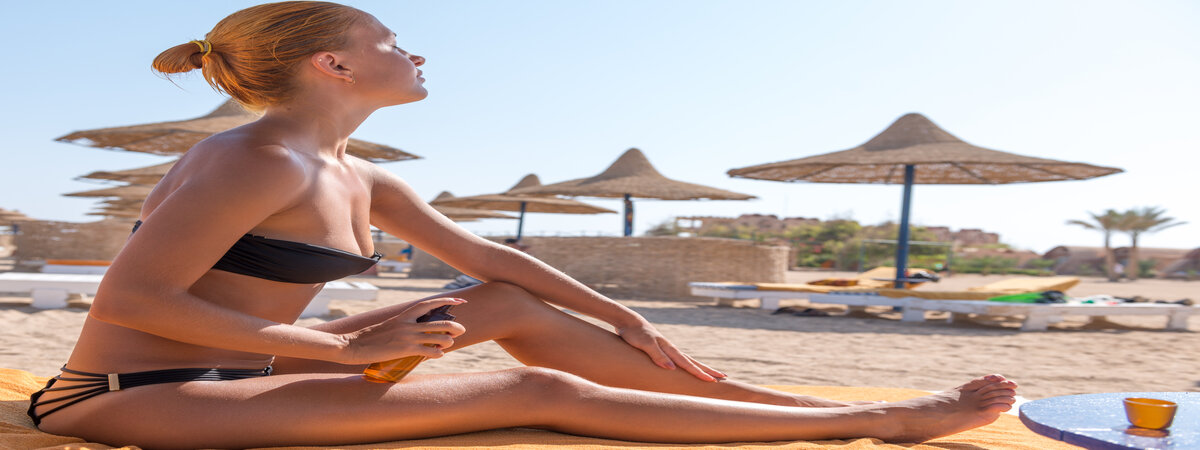
What is the best UV index for tanning?
Sun tanning involves UV radiation exposure. What’s the safest time for a burn-free tan? Explore insights on UV index for tanning and skin protection. Getting a sun tan involves exposure to ultraviolet (UV) radiation. When is the best time to tan safely without burning? Here are insights into tanning and protecting your skin from the harmful effects of UV rays.
Understanding the UV Index
The UV index (UVI) measures the strength of UV rays at a particular time and place. UV ray intensity fluctuates during the year based on proximity to the sun. For instance, in December, the sun is closer to the Earth in the Southern Hemisphere, increasing ultraviolet radiation levels there.
Developed in the early 90s by Canadian scientists, the UV index scale aids the public in safeguarding against UV radiation.
UVI values range from 0 to 11. Higher values pose greater risks to the skin and eyes, leading to quicker harm. In extreme UV conditions, limiting outdoor time and staying indoors between 10 AM – 4 PM is advisable.
If venturing out during high UVI times, wearing protective clothing like long sleeves, a wide-brimmed hat, and sunglasses is recommended.
You can find the UV index of your location on a given day via Google or your smartphone’s weather app.
Sun Exposure Guidelines
Exposure to the sun’s UV rays can damage the skin and potentially lead to skin cancer, even on cooler or cloudy days. Sun exposure and tanning can expedite skin aging due to UV radiation’s impact on collagen and melanin levels.
However, some sun exposure can benefit skin conditions like acne and provide essential vitamin D, aiding in the absorption of calcium and phosphorus from food.
The National Institute for Health and Care Excellence (NICE) suggests 10 to 15 minutes of daily sun exposure (without sunscreen) from 11 am to 3 pm between March and October. Darker skin tones might require more time for similar benefits. For extended periods, using broad-spectrum sunscreen is crucial.
Understanding Tanning and UV Radiation
UV radiation boosts the skin pigment melanin. UVA radiation prompts melanin release within the skin, while UVB radiation stimulates increased melanin production, leading to a suntan.
Both types of UV radiation are present in sunlight. To tan, UV radiation needs to affect skin melanin levels without causing burns.
Is There a Healthy Tan?
Our London dermatologists emphasize that even obtaining a tan signifies sun damage; there is no ‘perfect’ UV index for safe tanning. In line with the NHS guidelines on sun exposure, they discourage the idea of a ‘healthy tan.’ To prevent burns, it’s advised not to remain outdoors for extended periods without sunscreen between 10 AM and 3 PM in summer and to seek shade whenever possible.
Recognizing Peak UV Radiation Times
UV radiation peaks between 10 AM and 3 PM in summer, especially on clear days. Some countries provide a daily UV index in weather reports. However, a scorching sunny day isn’t necessarily the best for tanning.
Even short exposure on such days can cause sunburn. If tanning during these periods, stronger sunscreen should be used to protect the skin. Sunscreen remains essential even on less bright days.
Protecting Skin Areas
Shield sensitive areas like the eyes, lips, and scalp while tanning. Consider protective eyewear, lip balms with sunscreen, and hair products with at least SPF 30 protection. Spray sunscreens work well for hard-to-reach spots like the scalp. Reapply sunscreen every 2 hours for continual protection.
Can Sun Damage be Reversed?
At the London Dermatology Clinic, our experts stress that even acquiring a tan indicates sun damage; there is no ‘ideal’ UV index for safe tanning. Consistent with the NHS guidelines on sun exposure, they advise against the concept of a ‘healthy tan.’ To prevent burns, it’s recommended not to linger outdoors without sunscreen for extended periods between 10 AM and 3 PM in the summer months and to seek shade whenever possible.
FAQ
What exactly is the UV Index and its significance for tanning?
The UV Index measures the strength of UV radiation and its impact on skin exposure during tanning. Understanding its levels helps in safer tanning practices.
Can I tan safely at lower UV Index levels?
While lower UV Index levels pose reduced risk, tanning without proper protection can still cause skin damage. Balancing exposure and protection remains crucial.
How does the UV Index vary by location and season?
UV Index levels fluctuate based on geographical location, time of year, and time of day. Different regions experience varying UV intensities, impacting safe tanning durations.
Are there differences in UV Index for different skin types?
Individual skin types react differently to UV radiation. Understanding how your skin responds to varying UV Index levels helps tailor safe tanning practices.
Can sunscreens affect the impact of the UV Index for tanning?
Sunscreens with varying SPF levels influence the skin’s protection against UV radiation. Learning how different SPFs interact with the UV Index aids in effective tanning protection.


